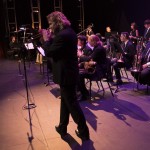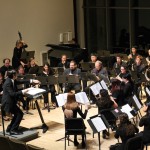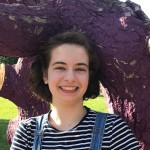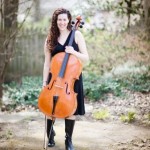On November 15, 2018, Prof. Lee Smithey joined his co-editor and colleague, Prof. Lester Kurtz (George Mason University) to talk about their new edited book, The Paradox of Repression and Nonviolent Movements (Syracuse University Press). The webinar was recorded, and you are welcome to view it here. The Communications Office, also published a piece on the College’s website that you may also read below. You can learn more about the book at http://paradox.swarthmore.edu
Lee Smithey, associate professor of peace & conflict studies and sociology, is a co-editor and contributor to a new book, The Paradox of Repression and Nonviolent Movements (Syracuse University Press, 2018), that offers an in-depth exploration of the use of repression in political arenas and its unintended effect of sometimes fanning the flames of nonviolent resistance.
“The concept of backfire, or the paradox of repression, is widely understood to be fundamental to strategic nonviolent action, but it has not been fully investigated. It was work that needed to be done,” says Smithey, who in addition to writing and teaching about nonviolent resistance has also participated in peaceful protests. “Power is not only about repression but also about building public support.”
The book, edited by Smithey and Lester Kurtz, a George Mason University sociology professor, is meant as a tool for scholars and activists to understand how repression works, as well as to study significant incidents when nonviolent activists took measures to help make repression a defining moment. For example: “When authorities are seen as attacking or disrespecting widely shared symbols, they may mobilize people in defense of shared collective identities,” write Smithey and Kurtz.
The editors first wrote about the topic in 1999, but organizing for the new book began in 2009—bringing together diverse, global contributors to study how repression can energize nonviolent movements and how nonviolent activists have worked to manage repression in their favor. It includes the grassroots efforts of nonviolent resistance such as Women of Zimbabwe Arise, who bravely joined forces as “mothers of the nation” to stand against dictator Robert Mugabe.
As they planned the book, Smithey and Kurtz organized a two-day writing retreat for the contributors to help build an integrated approach to the project. “It was intellectually exciting,” Smithey says. “We were committed early on to making this book a collaboration between academics and practitioners.”
One practice the book’s authors explore is called repression management—enacted by withstanding or avoiding repression or by creating scenarios in which repression against nonviolent activists would more likely elicit a sense of public outrage (and ultimately support).
One example, Smithey says, is the now-iconic photo of Ieshia Evans, who stood stoically in a flowing dress and faced a line of law enforcement officers in riot gear as she protested the shooting death of Alton Sterling. The photo, taken in downtown Baton Rouge, La., on July 9, 2016, quickly became a cultural touchstone.
The Paradox of Repression and Nonviolent Movements also examines the psychological costs for agents of repression, elites’ attempts to avoid triggering the paradox of repression, repression of online activism, and the work of overcoming fear.
“Repression is an attempt to demobilize nonviolent movements by sowing fear,” Smithey says, “but activists can work together to overcome fear and continue to mobilize.”
The International Center on Nonviolent Conflict will host a webinar by Smithey and Kurtz Nov. 15 from noon to 1 PM. Smithey will also offer an Alumni Council webinar on the book on Nov. 28.










